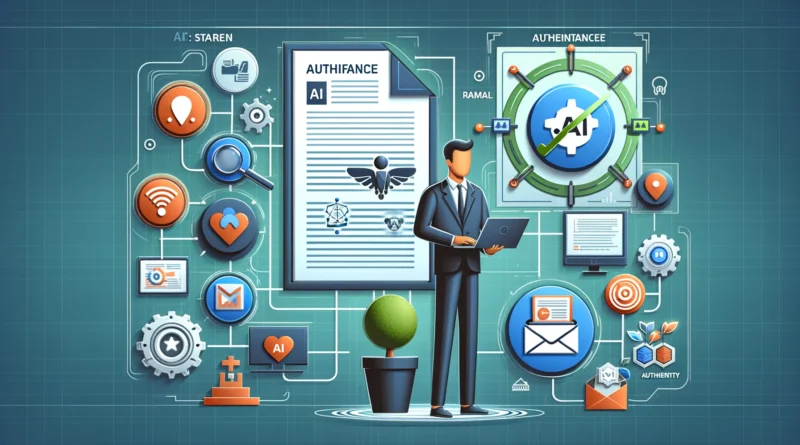C2PA Standards Body for AI: What Marketers Need to Know
In today’s digital world, authenticity and trust are paramount, especially for marketers leveraging artificial intelligence (AI) in their campaigns. The Coalition for Content Provenance and Authenticity (C2PA) plays a crucial role in ensuring the integrity of digital content. Understanding C2PA standards is essential for marketers to maintain transparency, build trust with their audience, and stay ahead in a competitive landscape. Here’s what marketers need to know about C2PA and its impact on AI-driven marketing.
What Is C2PA?
The Coalition for Content Provenance and Authenticity (C2PA) is an initiative formed by leading technology and media companies, including Adobe, Microsoft, Intel, BBC, and others. The goal of C2PA is to create a universal standard for digital content provenance, ensuring that the origin, authenticity, and integrity of content can be verified. This is particularly important in the age of AI, where the creation and distribution of digital media are increasingly automated and sophisticated.
Why C2PA Standards Matter for AI in Marketing
- Ensuring Content Authenticity
AI-generated content, such as deepfakes or automated news articles, has raised concerns about content authenticity. C2PA standards provide a framework for verifying the authenticity of digital media, ensuring that AI-generated content can be trusted. For marketers, this means being able to assure their audience that the content they are consuming is genuine and has not been tampered with. - Building Consumer Trust
Trust is a critical component of any successful marketing strategy. By adhering to C2PA standards, marketers can demonstrate a commitment to transparency and authenticity. This helps in building and maintaining consumer trust, which is essential for long-term brand loyalty and credibility. - Combatting Misinformation
The proliferation of fake news and misinformation poses a significant challenge for marketers. C2PA standards help combat this issue by providing a reliable way to verify the provenance of content. This ensures that marketing messages are not only credible but also aligned with ethical standards, protecting the brand’s reputation. - Enhancing Compliance
With increasing regulatory scrutiny on data privacy and content integrity, C2PA standards help marketers ensure compliance with legal and industry regulations. This reduces the risk of penalties and enhances the overall credibility of marketing campaigns.
How C2PA Works
C2PA standards involve embedding provenance metadata into digital content at the time of creation. This metadata includes information about the content’s origin, such as who created it, when it was created, and any changes made to it. Here’s a simplified process of how C2PA works:
Content Creation: When content is created, whether by humans or AI, provenance metadata is embedded into the file. This metadata records crucial details about the content’s origin and integrity.
Content Distribution: As the content is shared and distributed across various platforms, the provenance metadata remains intact, providing a traceable record of the content’s history.
Content Verification: Consumers and platforms can access the metadata to verify the content’s authenticity, ensuring that it has not been altered or misrepresented.
Benefits of C2PA Standards for Marketers
- Increased Transparency
C2PA standards provide a clear and verifiable record of content provenance, enhancing transparency in digital marketing. This helps marketers demonstrate accountability and build trust with their audience. - Improved Content Integrity
By ensuring that AI-generated content is authentic and unaltered, C2PA standards help maintain the integrity of marketing messages. This is crucial for maintaining a consistent and trustworthy brand image. - Better Audience Engagement
Consumers are more likely to engage with content that they trust. By adhering to C2PA standards, marketers can improve audience engagement by providing content that is verifiable and credible. - Reduced Risk of Fake Content
C2PA standards help marketers avoid the pitfalls of fake or manipulated content, which can damage brand reputation and lead to legal issues. This ensures that marketing campaigns are both ethical and effective.
Implementing C2PA Standards in Your Marketing Strategy
To leverage the benefits of C2PA, marketers should integrate these standards into their content creation and distribution processes. Here are some steps to get started:
Educate Your Team: Ensure that your marketing team understands the importance of content provenance and how C2PA standards can enhance your marketing efforts.
Adopt Provenance Tools: Use tools and platforms that support C2PA standards to embed and manage provenance metadata in your digital content.
Evaluate Your Content: Regularly assess your content to ensure it meets C2PA standards and remains authentic and trustworthy.
Stay Informed: Keep up-to-date with the latest developments in C2PA and related technologies to ensure your marketing strategies remain compliant and effective.
Conclusion
C2PA standards provide a robust framework for ensuring the authenticity and integrity of digital content, particularly in the realm of AI-driven marketing. By adopting these standards, marketers can build trust with their audience, enhance content credibility, and stay compliant with industry regulations. Understanding and implementing C2PA standards is essential for maintaining a competitive edge in today’s digital marketing landscape.
